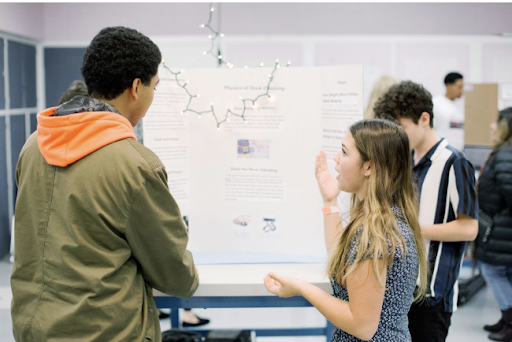By Antonio Tapia, Senior Associate Partner, Innovative Public Schools
I have lived in California for 20 years and experienced my fair share of earthquakes. When the ground under you starts shaking, you don’t think about how you might reinforce your home or rebuild its foundation. You check on your kids and pets and take cover. You wait until the shaking stops, assess the damage, and then determine how to rebuild.
Covid-19 was the equivalent of an earthquake for schools. And while the virus continues to cause disruption, our education system has slowly begun to recover and rebuild. While it’s far from a wholesale reinvention, some aspects of schooling are changing, which creates new challenges and opportunities for the sector.
As a funder and supporter of innovative public schools across the country, NewSchools engages with and learns alongside hundreds of leaders each year. Over the past two investment cycles, we’ve partnered with over 50 new schools. As we look back on what we’ve learned, there are four shifts or trends we’re seeing across our school portfolio and the broader field.
Social-emotional learning is no longer taking a back seat to academics
Six years ago, NewSchools collaborated with schools in our portfolio to identify mindsets, habits, and skills as well as school culture and climate factors which, along with academic outcomes, make up our expanded definition of student success (EDSS). The idea that schools should support students’ social-emotional learning and create conditions to do this as part of their academic program was not widely accepted or implemented at the time. Today, every educator we come across recognizes that learning can’t happen without tending to the social, emotional, and mental health needs of students simultaneously. Over the last two years, and especially in our latest investment cycle, we’ve seen a shift in how leaders share these ideas — schools no longer view this expanded definition as an innovation within their models, but as a central component of the student and staff experience. We’re excited about this shift towards a more comprehensive approach to learning, and look forward to going even further to support the wellbeing of all students.
Founders are co-designing schools with their communities
Many parents and teachers had to work together to make distance learning work for students. Schools leaders are capitalizing on this increased interdependence to build schools with the communities they serve. This approach to designing schools is inherently challenging. School leaders can be pulled in different directions and should avoid making promises that they can’t always deliver on when different community voices are part of this process. They also must be willing to compromise and sometimes concede. Ultimately, though, the benefits are transformative — strengthening bonds between schools and communities and enhancing opportunities for kids. In New York City, The Literacy Academy Collective brought together parents, educators, district leaders as well as private and community partners from across the city to design and lead a complex model serving students with learning differences, one of the most underserved groups in their system. In the Atlanta region, the founders of DeKalb Brilliance Academy engaged over 1,000 community stakeholders in a series of listening sessions to design their K-8 school. Community members’ involvement in the design of the curriculum resulted in a project-based learning approach in which students will learn from and work alongside community-based organizations and professionals.
High schools are providing more flexible learning options
More high schools in our portfolio are broadening their options to meet students and families where they are. Responding to demand from parents and students who prefer the convenience of learning at home, innovative charter organizations such as DaVinci Schools continue to offer hybrid learning options while some districts are launching these schools as stand-alone options. New York City’s A School Without Walls, for example, combines the flexibility of remote learning with in-person support to allow high schoolers to excel in spaces that work well for them. Increasingly, too, our portfolio includes high schools that are responding to local industry needs. These schools help students make informed decisions about the pathways they want to pursue. Some offer dual enrollment programs that allow students to earn college credits while they’re still in high school. Others offer internships and apprenticeships in which students earn industry credentials. For many students, these opportunities translate into college savings or better-paying jobs after high school. We’re excited that more high schools are offering multiple pathways to success and giving students more options to graduate ready for college and careers.
New school teams need deep experience running schools
Opening and running a school has become harder than ever amid escalating costs, a shrinking teacher workforce, divisive politics, and other stresses from the pandemic. Within schools, the pandemic was not only traumatic for students and teachers alike, but it exacerbated long-standing inequities and strained communication across stakeholders. It is no longer possible for one school leader to shoulder so much responsibility; the job now requires strong teams with deep instructional and operational experience and a range of diverse skills to navigate the many challenges they face. School leaders will need to build coalitions to address the academic, social and emotional needs in their communities and they will also need to dig into their respective wells of experience and circles of support built over years to sustain themselves in a role that is oftentimes characterized by a certain amount of loneliness. Over the past two years, we’ve funded a larger share of more experienced teams and look forward to both supporting and learning from these school innovators.
As the new school year unfolds, we will continue to share what we’re learning from our innovative schools portfolio and discuss these trends in more depth. As any Californian can tell you, there might be another tremor just right around the corner. While there’s more recovery work ahead, we are seeing many schools rebuilding stronger so that they’re better prepared for whatever comes their way.
